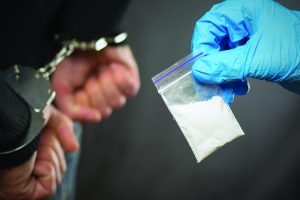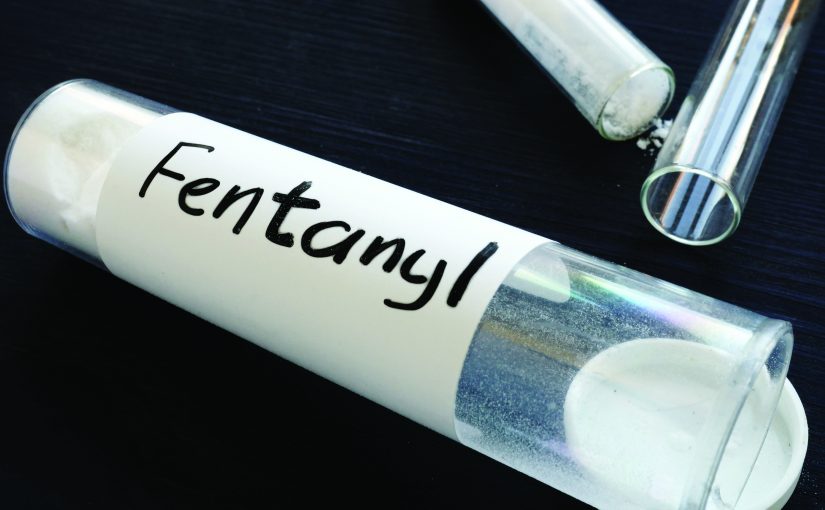Publicly funded crime and forensic laboratories serve as repositories of extensive public health and public safety data, with the potential for utilization at the local, regional, state, and national levels to inform better policy and legislation. This raises questions about the programs responsible for generating such data, the best practices for its effective use, the imperfections in data collection, and how law enforcement can leverage these valuable resources for improved data analysis and decision-making.
Data Collection
It is crucial for public safety policy advocates and decision-makers to recognize the opportunities presented by data generated by the forensic community. Forensic units specializing in seized drugs and toxicology are uniquely positioned to provide near real-time prevalence data on drug use, misuse, overdoses, and fatalities. Data collected from drug seizures combined with robust and timely testing procedures provide valuable insights into drug supply, regional usage patterns, potential combinations of substances, and risks to public health and safety. Collaborations between public safety and public health entities can facilitate the immediate sharing of this prevalence information.
A noteworthy example of such a collaboration is San Diego County, the second most populous county in California, where a robust and timely testing program has been established. Major local and regional law enforcement agencies in the county employ in-field drug spectroscopy testing, enabling immediate chemical identification of substances, often without the need to open drug packaging, thus enhancing officer safety. This program, initiated in 2018, has since expanded to include more than two dozen instruments deployed throughout the county, even within detention facilities and state prisons. The regional crime laboratory has validated the technology. Any cases involving inconclusive results, concerns for officer safety, or the need for enhanced officer training or those deemed nonroutine are sent for forensic analysis by the regional crime laboratory. Moreover, cases set for criminal prosecution undergo forensic analysis, prioritizing state-of-the-art technology and limited staff resources for the most challenging cases and those crucial for adjudication outcomes.
This testing generates valuable data, encompassing field identification and comprehensive forensic chemical analysis. The comprehensive forensic testing data are consistently maintained, subject to monthly data mining, and shared with various stakeholders, including police command staff, K9 units, medical examiner’s offices, drug prevention coalitions, overdose task forces, local emergency medical departments and hospitals, the intelligence community, and public health agencies. Such collaboration and data sharing offer specific guidance regarding the extent of postmortem toxicology testing conducted by medical examiners. Additionally, they support countywide initiatives related to drug education and trends, inform updates to law enforcement training, and guide decisions about expanding testing capacity based on regional drug prevalence for both field and laboratory testing.
 The data related to seized drug prevalence are instrumental in informing prevention and education efforts, particularly in understanding the various forms of drug use. This information is vital for populations that are inexperienced with drugs or in the early stages of use. It is especially relevant when addressing the dangers associated with counterfeit pills and edibles. School resource officers and advocates for drug education and prevention can use actual drug prevalence data to engage with youth populations at higher risk of misuse and overdose. Furthermore, this information is critical in supporting investigations of drug-facilitated crimes and in intelligence sharing among relevant agencies.
The data related to seized drug prevalence are instrumental in informing prevention and education efforts, particularly in understanding the various forms of drug use. This information is vital for populations that are inexperienced with drugs or in the early stages of use. It is especially relevant when addressing the dangers associated with counterfeit pills and edibles. School resource officers and advocates for drug education and prevention can use actual drug prevalence data to engage with youth populations at higher risk of misuse and overdose. Furthermore, this information is critical in supporting investigations of drug-facilitated crimes and in intelligence sharing among relevant agencies.
Historically, drug trends in the United States have followed discernible patterns, often originating overseas in countries like Australia, the United Kingdom, Europe, and Russia. A review of the United Nations Office on Drugs and Crime’s World Drug Report can offer proactive insights into expected drug trends and methodologies for their analysis. Once emerging substances reach the United States, they tend to spread from east to west, with methamphetamine being a notable exception. This intelligence enables proactive measures to update technology and, more importantly, to keep forensic chemical testing libraries current with new substances and advances in forensic toxicology methodologies. Testing these substances in biological samples, specifically in human subjects, adds complexity to the evolving landscape of emerging drugs and necessitates effective toxicological methodologies.
“The timely sharing of data from death investigations, drug seizures, and drug-influenced toxicology tests provides invaluable intelligence.”
Effective communication about drug seizure testing, including the analysis of diluents and adulterants, is invaluable for the development and refinement of forensic drug toxicology testing. This information can be obtained through comprehensive in-house forensic analysis or by reviewing reports from organizations such as the Drug Enforcement Administration’s National Forensic Laboratory Information System (NFLIS) and the Center for Forensic Science Research and Education (CFSRE). Both postmortem and antemortem toxicology data further enhance the understanding of drug supply and associated risks. Postmortem testing, conducted by medical examiners and coroners, should extend beyond the testing for traditional drugs of abuse, especially in light of the growing prevalence of substances like fentanyl, which was initially diverted from legitimate medical use before becoming illicit. As a result, forensic laboratories, medical examiner’s offices, and hospitals had to adapt testing protocols to identify fentanyl and its analogs in samples.
Intelligence derived from drug seizures plays a pivotal role in shaping forensic drug toxicology methodologies, ensuring the identification of substances contributing to or causing fatalities. Postmortem data allows for a comprehensive understanding of the risks associated with individual or combinations of substances and patterns of use. These usage patterns become evident in drug-facilitated crimes, particularly as user populations adapt to drug risks or develop tolerance. The prevalence of drugs in antemortem cases from forensic laboratories is also observed in drug-facilitated sexual assaults, public intoxication cases, and investigations into driving under the influence (DUI). Forensic testing in these types of cases frequently reveals extended periods of drug use, polysubstance use and misuse, and the development of user tolerance, often accompanied by lethal drug levels and the concurrent use of multiple substances.

The timely sharing of data from death investigations, drug seizures, and drug-influenced toxicology tests provides invaluable intelligence. This information serves as a valuable resource for narcotics officers and drug recognition experts (DREs). However, the utility of these data depends on their accessibility and dissemination. In San Diego, to effectively communicate forensic drug prevalence data, dashboards are generated by the Regional Crime Laboratory at varying intervals, such as monthly, quarterly, biannually, or annually, depending on the needs of stakeholders. These dashboards compile and share data on drug prevalence, encompassing both seizure and toxicology data, with multiple entities, including impaired driving regional and state task forces, prevention and education partners at the county and state levels, poison centers, and hospitals, as well as public health agencies.
Data Sharing and Accessibility
San Diego County and, more significantly, California have successfully leveraged effective data sharing to inform policy recommendations and outcomes. This approach has provided essential tools and communication channels for both frontline law enforcement personnel and command staff. So, what does the implementation of such a system entail? First and foremost, it requires an understanding of what forensic laboratories can and cannot test for, along with an awareness of their resources. Collaboration is crucial to determine how to generate data products that raise community and officer awareness while addressing emerging drug prevalence, both in terms of drugs found in individuals and those seized. Support for information data systems and advanced drug detection technologies are essential. Comprehensive forensic testing should be seen as a means to better comprehend the bigger picture from a public health perspective, rather than solely as a tool for supporting adjudication efforts. Encouraging collaboration between narcotics officers and drug recognition experts (DREs) and providing opportunities to tour forensic provider laboratories enhance understanding of capabilities and limitations. Forensic scientists can actively support officer training and, most importantly, foster ongoing communication.
In San Diego County, drug prevalence dashboards are distributed to law enforcement command staff, K9 leadership, and DREs countywide. County DREs receive regular communication about drug trends, upcoming training opportunities, and scientific literature pertaining to concerning drugs’ impacts. This approach facilitates the continued growth of expertise, the establishment of relationships, and the improvement of adjudication outcomes. Efforts to improve drug recognition are needed across the United States. Drug recognition expertise can extend beyond traditional applications related to cases of DUI and traffic-related incidents to encompass the evaluation of drug-facilitated crimes such as sexual abuse or child neglect, as well as youth drug education and prevention. School resource officers equipped with drug recognition expertise can identify, mitigate, and ideally reduce drug-related risks among youth populations.
Furthermore, it is beneficial to consider collaboration beyond regional borders. The San Diego County Regional Crime Laboratory shares data not only with intelligence partners within San Diego County but also with the neighboring county to the north. Together, these regional crime laboratories, serving a combined population of nearly 7 million, generate prevalence data dashboards that contribute to informed decision-making.

Recent data sharing has also aided hospital and clinical toxicologists to better derive treatment protocols for emergency medical interventions. San Diego’s Regional Crime Laboratory dashboards helped secure grant funding for traffic safety and enhanced toxicology testing efforts. The information is shared at state and national levels to educate on pre- and post-pandemic use patterns over a five-year period, helping to assess meaningful countermeasures. Forensic data are extremely helpful when collected consistently before and after decriminalization legislation and if national or regional drug trend patterns are emerging locally. San Diego data have been used to formulate response to crises involving combined use of fentanyl and xylazine, as well as manufacturing patterns based on tested drug precursors or fentanyl analogues. Monitoring of delta-8-tetrahydrocannabinol and hallucinogens including LSD and psilocin/psilocybin (mushrooms) has also been established, the results of which assisted with drafting veto recommendations to pending state legislation.
Finally, there is an active effort to test substances and paraphernalia in death investigations, primarily in cases of overdose. These data can provide some of the timeliest intelligence, as emerging substances may pose the greatest risks, at least initially.
It is essential to recognize that data sharing models are not novel and have already driven substantial changes in California. After the establishment of the state impaired driving task force, as mandated by Senate Bill 94 in 2017, the task force issued recommendations to the California legislature in 2021. These recommendations emphasized the need for improved data collection and sharing and were ultimately supported by funding from cannabis tax revenue. The funding was allocated through a grant process to enhance public health, education, enforcement, and toxicological testing efforts statewide. The final report acknowledged best practice data sharing models and included recommendations to support evidence-based policy decisions.1
In 2022, the California legislature passed Senate Bill 864, requiring clinical toxicology testing for fentanyl in hospital emergency departments.2 In the same year, Senate Bill 925 was passed, obligating comprehensive testing for drugs in all traffic safety–related fatalities.3 Both pieces of legislation furthered the support for evidence-based, statistics-driven data collection of drug prevalence and a better understanding of public health and public safety risks.
Meaningful Impacts
In conclusion, forensic laboratories generate valuable data as a result of law enforcement activities. While the type of community engagement that drives forensic testing is often reactive, there is an opportunity to leverage this reactive information proactively to enhance drug education, intervention, and interdiction practices. Effective communication and collaboration regarding the outcomes of forensic laboratory testing, both on drugs found in individuals and those seized, can drive meaningful community awareness; public health education; prevention; mitigation; public safety; and, most importantly, evidence-based, data-driven public policy. d
Notes:
1California Highway Patrol—Impaired Driving Task Force, Report to the Legislature: Senate Bill No. 94 (2021).
2General Acute Care Hospitals: Drug Screening, CA SB864 (2022).
3Fatal Vehicular Accidents: Chemical Test Results, CA SB925 (2022).
Please cite as
Jennifer Harmon, “Forensic Laboratories as Drug Policy Partners,” Police Chief Online, January 24, 2024.



